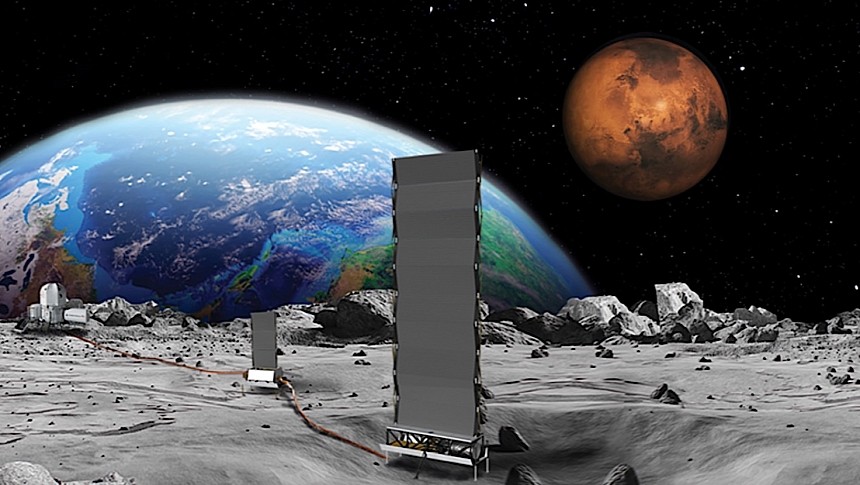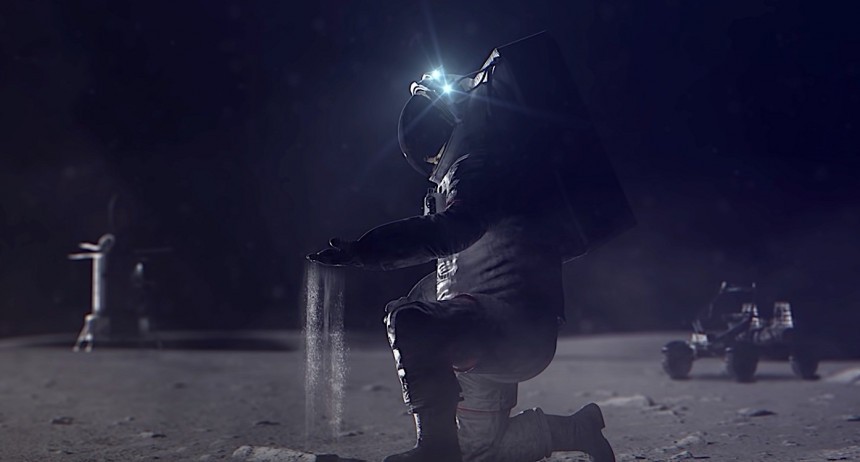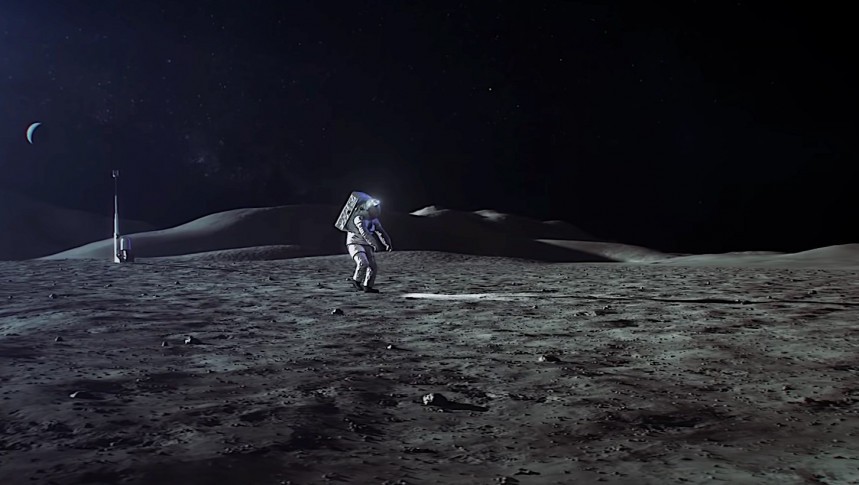The impending arrival of humans on the Moon and their planned stay there for many years to come pose some very serious challenges for mission planners. These challenges range from transportation to resources and power generation and, believe it or not, solutions for all of them are thoroughly researched, even if not in public view or heavily advertised.
The arrival and stay of humans on the Moon and their subsequent expansion to Mars depend greatly on our ability to keep habitats, rovers, grids, and science experiments running. For that, naturally, we need power.
There are several ways we could go about generating the power we need in these remote places of the solar system. The most obvious and readily available is solar power, harnessed by means of solar panels, and because of that several such projects are currently ongoing.
Such an approach is currently being used by almost all spaceships, rovers, and landers spread throughout the solar system, but it comes with a lot of limitations, ranging from the fact solar panels can fall victim to unpredictable events generated by weather and other factors to the absence of sunlight in a given place that kind of renders them completely useless.
And on the Moon light is not always present. The Earth satellite is riddled with permanently shadowed areas where a conventional solar panel system would not work. Coincidentally, these permanently shadowed areas are the most likely to have some of the resources lunar astronauts would need, more specifically water in the form of ice.
Then, the night up there on the Moon is over 14 of our Earth days long, posing some insane challenges for operations.
All of the above means that, if the Artemis program (and the ones that will follow in no smaller measure) is to succeed, a new approach to power generation is needed.
It was back in 2018 when NASA ended a project called Kilopower. It was an effort meant to develop the "preliminary concepts and technologies that could be used for an affordable fission nuclear power system." A nuclear power system that could essentially make life on planetary surfaces a lot easier to handle.
Kilopower did what it was meant to do, and four years after it concluded it gave birth to the Fission Surface Power Project. It was in 2022 when Phase 1 of the project began, with three companies (Lockheed Martin, Westinghouse, and IX) being selected to advance their design concept proposals.
Each company received a contract worth $5 million to research a nuclear fission reactor capable of generating 40 kilowatts of power and capable of supplying energy to whatever machines humans will deploy on the Moon. And by research, I mean looking at all of the reactor's components, including the power conversion system, heat rejection, and distribution.
40 kilowatts of power here on Earth translate into the electricity 30 average American households need to be kept up and running for no less than ten years. Quite enough for average human needs, even on the Moon, where such an output is considered more than adequate for the requirements of the astronauts and the gear they operate.
As per NASA requirements, the hardware needs to be lightweight (under six metric tons) and able to function regardless of where it is placed, the weather around it, and the availability of light and other local resources. More importantly, it is meant to operate without any human intervention and must not need an overhaul for at least ten years. Being remotely operated was another of the targets NASA put forward.
It's not clear how far along the three companies involved got with their research, but NASA announced this week the closure of the project's first phase. That doesn't mean work on it won't continue, as Phase 2 is set to open in 2025.
That's because the American space agency is as serious as it gets about the nuclear reactor. NASA plans to have it deployed on the Moon, for testing purposes, by the end of the current decade or the beginning of the next one at the latest.
Once up there, the reactor will have to complete a one-year demonstration of its capabilities, and later keep running for an extra nine years. If all goes well NASA plans to update the design so that it can be used for future Mars missions as well.
All three companies involved in Phase 1 of the project will continue their work in Phase 2. They will be joined by Rolls-Royce North American Technologies, Brayton Energy, and General Electric, who will work on the power converters for the reactor. The power converters are needed to transform the thermal power produced during fission into electricity.
It is during Phase 2 that the final design of the reactor will be completed, and the Moon demo will start.
There are several ways we could go about generating the power we need in these remote places of the solar system. The most obvious and readily available is solar power, harnessed by means of solar panels, and because of that several such projects are currently ongoing.
Such an approach is currently being used by almost all spaceships, rovers, and landers spread throughout the solar system, but it comes with a lot of limitations, ranging from the fact solar panels can fall victim to unpredictable events generated by weather and other factors to the absence of sunlight in a given place that kind of renders them completely useless.
And on the Moon light is not always present. The Earth satellite is riddled with permanently shadowed areas where a conventional solar panel system would not work. Coincidentally, these permanently shadowed areas are the most likely to have some of the resources lunar astronauts would need, more specifically water in the form of ice.
Then, the night up there on the Moon is over 14 of our Earth days long, posing some insane challenges for operations.
All of the above means that, if the Artemis program (and the ones that will follow in no smaller measure) is to succeed, a new approach to power generation is needed.
Kilopower did what it was meant to do, and four years after it concluded it gave birth to the Fission Surface Power Project. It was in 2022 when Phase 1 of the project began, with three companies (Lockheed Martin, Westinghouse, and IX) being selected to advance their design concept proposals.
Each company received a contract worth $5 million to research a nuclear fission reactor capable of generating 40 kilowatts of power and capable of supplying energy to whatever machines humans will deploy on the Moon. And by research, I mean looking at all of the reactor's components, including the power conversion system, heat rejection, and distribution.
40 kilowatts of power here on Earth translate into the electricity 30 average American households need to be kept up and running for no less than ten years. Quite enough for average human needs, even on the Moon, where such an output is considered more than adequate for the requirements of the astronauts and the gear they operate.
As per NASA requirements, the hardware needs to be lightweight (under six metric tons) and able to function regardless of where it is placed, the weather around it, and the availability of light and other local resources. More importantly, it is meant to operate without any human intervention and must not need an overhaul for at least ten years. Being remotely operated was another of the targets NASA put forward.
It's not clear how far along the three companies involved got with their research, but NASA announced this week the closure of the project's first phase. That doesn't mean work on it won't continue, as Phase 2 is set to open in 2025.
Once up there, the reactor will have to complete a one-year demonstration of its capabilities, and later keep running for an extra nine years. If all goes well NASA plans to update the design so that it can be used for future Mars missions as well.
All three companies involved in Phase 1 of the project will continue their work in Phase 2. They will be joined by Rolls-Royce North American Technologies, Brayton Energy, and General Electric, who will work on the power converters for the reactor. The power converters are needed to transform the thermal power produced during fission into electricity.
It is during Phase 2 that the final design of the reactor will be completed, and the Moon demo will start.











